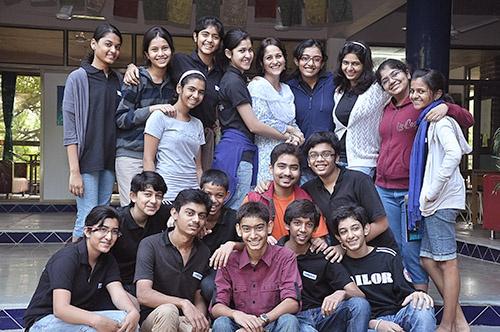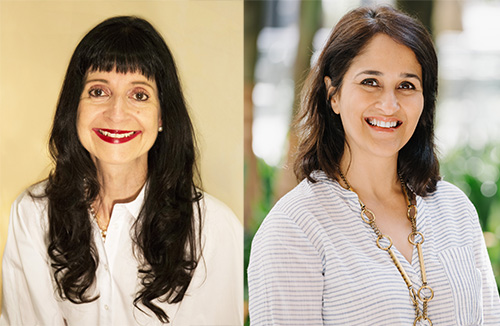“Our Riverside school uses a curriculum that we call ‘Humane’, and the 5 E’s that shape our curriculum are Empathy, Ethics, Excellence, Elevation and Evolution” – Kiran Bir Sethi
Children are the future. Teach them well and let them lead the way.
Since 2009, Design for Change, based in India, has focused on creating learning environments that balance academic programs with character development. Their program focuses on problem-solving and critical thinking skills combined with teaching strategies that promote empathy. Kiran Bir Sethi, founder of Design for Change, believes an “I can” mindset will always empower students to do their best work. Her 4-step ‘Feel, Imagine, Do, Share’ framework (FIDS) is designed to foster imagination and innovation. The FIDS toolkit was first launched in 10 Indian languages and sent to 30,000 schools across India. Its unique value proposition, according to Kiran, positioned children as “our today,” i.e. they have “all the ingredients to make the world a better place.” What happened next?
The Global Search for Education is pleased to welcome Kiran Bir Sethi to discuss just that.

“Any child can unleash the ‘I CAN’ superpower.” – Kiran Bir Sethi
How “big” is your program currently – how many schools, communities, and leaders are involved, and where are they based?
Design for Change currently is in over 65 countries. We have reached around 60,000 schools in those 65 countries. Our group is primarily children between the ages of 8 and 13 because we believe that’s where you can plant the seeds of empathy and action. They are cut across all kinds of school profiles, rural, urban, semi-urban, as well as special needs, so you find that Design For Change and FIDS framework are versatile and can fit into any context.
What excites you most about your curriculum? What feedback do you get from schools?
What excites me when I see how Design for Change is being implemented across the world is that when children are listened to and given that respect, we see them take ownership for the change and in that we see them design with communities rather than for. Our Riverside school uses a curriculum that we call ‘Humane’, and the 5 E’s that shape our curriculum are Empathy, Ethics, Excellence, Elevation and Evolution. This curriculum is actioned through the ‘Feel, Imagine, Do, Share’ framework. At Riverside, it is immersive and is co-created with children in a regular, iterative process. Design for Change uses just the framework to plant the seed.

“The world needs more empathetic citizens.” – Kiran Bir Sethi
Please tell us a story of HOW the program unleashes the “I CAN superpower”.
Here are some case studies from DFC:
Students stand-up for Equality in Rajasthan
Satya Bharti School, Labana, Rajasthan
Not content to allow injustice to persist just because it has persisted for ages, the young change-makers of Satya Bharti School in Labana, Rajasthan, helped to fight a problem that has loomed large in Indian society since time immemorial. Convinced of the importance of equality even at their tender age, these students were staunchly opposed to the practice of untouchability in their village.
With help from their teacher, they planned to meet the children of Harijan (untouchable) families and spend time with them, playing and eating together, to spread their message of equality and dignity. Many of their elders disapproved strongly of allowing the untouchable families to participate in village events and permitting their children to attend regular schools. In response, the children undertook tasks like sweeping roads, cleaning, and other menial tasks that were primarily performed by Harijan children. The children asked their parents to mistreat them just as they mistreat the Harijan children and did not allow their parents to touch them.
To make a larger appeal, the children marched through the village chanting Gandhian principles of equality and mutual respect. The children sat through a one-day-long, silent, hunger strike and went back home only after the village authorities softened and agreed to discuss equal treatment of Harijan families.
The children made their elders hug the Harijan families, an action that marks an amazing beginning to this story of change in this village.
I Want to Feel your Face
You are not only a voice to me anymore
Design for Change, Taiwan
Advisors: Jia-Yan Feng, Ya-Feng Liu
Zhang Tuo Ye from National Taipei University of Education Experimental Elementary School and Xie Zhng Zhe, Deng Cheng Ping, and Chen Si Hao from Taipei Municipal Jen Ai Junior High School discovered that their visually impaired friend, Jack, wanted to “see” his friends’ appearance by touching their faces but he was too shy to express his wishes. Some of Jack’s friends were willing to let Jack touch their faces to “see” their appearance, too. Hence, Tuo Ye and his friends started to help Jack to realize his dream. Tuo Ye guided Jack to express his thoughts by sending handmade cards to the classmates, and he received a lot of positive feedback in return. Two classmates were also willing to be interviewed by Tuo Ye about their feelings. After the interviews, Tuo Ye made more cards for Jack to send out. People who even didn’t receive Jack’s invitations came to him and told Jack that they wanted him to touch their faces!
From this activity, the students also found out that, surprisingly, Jack had never touched his mother’s face before, and they arranged the event for him. It brought Jack and his mother much closer.
The participants believe that the Taiwanese nation is shy, and yet they made over two hundred cards to send to the Cultural and Educational Foundation for the Blind with a hope that they could help more blind people to shorten their distance with others.
What do you see as your major accomplishments to date and what are your goals for Design for Change in the next five years?
The framework has allowed so many schools and teachers to get excited that they can. While this has been great for children, which is a no-brainer, what has been fantastic and most gratifying to see is that around the world, it has gone to every kind of country, every context, which means that this works in all contexts. So, we feel excited any child can unleash the ‘I CAN’ superpower. That is what the world needs; the world needs more empathetic citizens.
In 2019, we are plan to take 4000 of these superheroes who’ve made the world a better place and their solutions to be hosted in Rome by the Vatican. As for our goals, we’re only in 65 countries right now, and in the next five years, we’d like to get to 108!